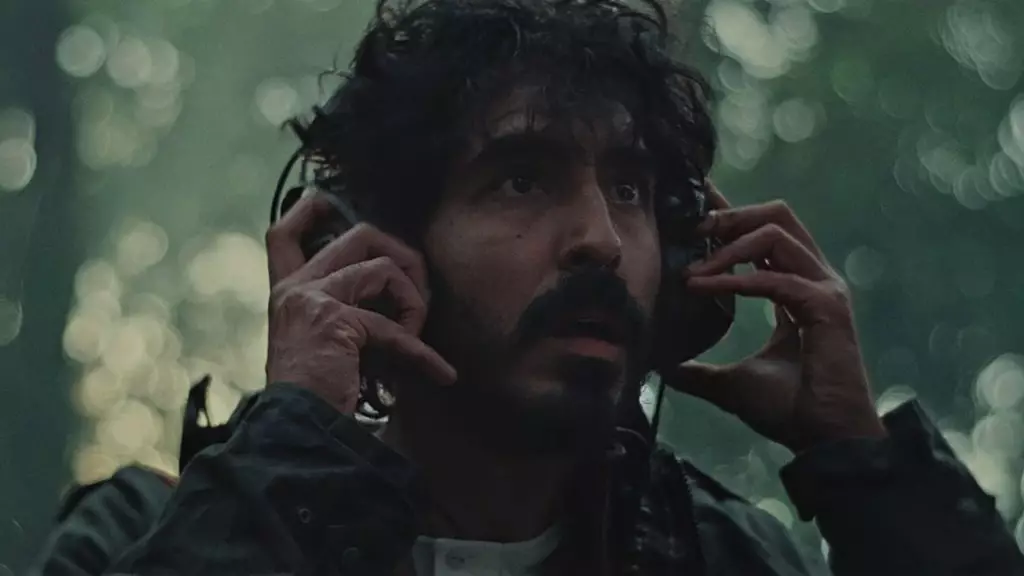Bryn Chaney’s feature debut, “Rabbit Trap,” invites viewers into a dark and intimate tapestry woven from Celtic folklore and the compelling nature of sound. Set against the backdrop of the Welsh countryside in 1973, the film chronicles the story of Darcy (Dev Patel) and Daphne (Rosy McEwen), a couple entangled in the throes of artistic creation. Their retreat to an isolated cabin, while ostensibly meant to foster creativity and complete their next musical project, swiftly spirals into an exploration of ancient mysteries that challenge the boundaries of their reality and artistry.
The relationship between sound and its tangible effects takes center stage in “Rabbit Trap.” Darcy’s obsession with capturing fleeting noises from the forest reveals a raw and primal desire to connect with a realm that most modern individuals overlook. The film masterfully employs sound—both in the form of natural field recordings and the ethereal score composed by Lucrecia Dalt. These auditory layers not only enhance the film’s atmospheric tension but also delve deep into the characters’ emotional landscapes, illustrating how sound serves as both a vehicle for connection and a gateway to darker truths.
The artistic and psychological intricacies of Darcy and Daphne’s relationship are vividly illustrated through the sonic palette of the film. Composer Lucrecia Dalt’s score should not merely be heard but experienced; it envelops the audience, echoing the couple’s creative highs and lows. The use of sound heightens emotional stakes, with moments of euphoric creation juxtaposed against instances of chilling silence, thus underscoring the push and pull of the duo’s shared psychological space.
In one particularly striking sequence, sound becomes a means of vulnerability when Darcy, plagued by sleep paralysis, inadvertently reveals his innermost fears. Daphne’s act of recording his subconscious ramblings becomes both a haunting form of intimacy and a method of confronting the darkness that hovers over their relationship. These recordings symbolize a bridge between their unspoken truths and the multifaceted layers of their identities. The unison of their artistic journey and emotional struggles adds depth to their characters, allowing Patel and McEwen’s performances to shimmer with authenticity.
The arrival of the nameless child (Jade Croot) injects an additional layer of complexity into the narrative. This enigmatic character, drawn to the couple’s music, serves as a vessel for folklore and local legends, enhancing the themes of innocence juxtaposed against a foreboding atmosphere. With a natural affinity for rabbit hunting and a childlike curiosity about the macabre, Croot embodies a duality that resonates throughout the film. This duality not only invites speculation regarding the child’s true nature but also acts as a catalyst for the exploration of parental instincts that develop between the couple and this mysterious figure.
Croot’s nuanced performance enriches the dynamics shared with Patel and McEwen, recalling the moments when creativity becomes intertwined with responsibility, joy, and dread. The emotional interplay creates a threefold bond that delves into the subconscious traumas that threaten to unravel their artistic endeavors. Through their interactions, “Rabbit Trap” artfully juxtaposes growth against the echoing backdrop of unresolved issues, accentuating how creation can be both a healing and a destructive force.
“Rabbit Trap” proves to be an intricate web of sound and shadow, revealing Bryn Chaney’s unique auteur vision. As Patel, fresh from his own successful directorial venture, provides a heartfelt performance that resonates with the film’s deeper themes, it becomes evident that this collaboration heralds the arrival of a promising new voice in cinema. With the exploration of sound as a fundamental element of storytelling, the film pushes the audience to reevaluate the complexities of communication, creativity, and the haunting specter of our own inner worlds.
By skilfully intertwining the supernatural with the intimate, Chaney offers a thought-provoking cinematic experience that lingers long after the credits roll, reminding us that sometimes, the silence speaks louder than words.

